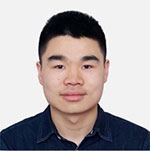SPS Webinar: 13 December 2022, presented by Dr. Qian Huang
Upcoming SPS Webinar!
Title: Deep Learning for All-in-Focus Imaging
Date: 13 December 2022
Time: 10:00 AM Eastern (New York time)
Duration: Approximately 1 Hour
Presenters: Dr. Qian Huang
Based on the IEEE Xplore® article: Deep Learning for Camera Autofocus
Published: IEEE Transactions on Computational Imaging, February 2021, available in IEEE Xplore®
Download: The original article is available for download.

Abstract:
Focus stacking is an effective approach to extending the depth of field of a camera, yet is challenging with regard to 1) controlling focal planes in forming a stack and 2) fusing the focal stack into composites that are free from defocusing, i.e., all-in-focus. We propose an all-in-focus imaging pipeline using deep learning techniques as a novel solution for focus stacking. In the proposed pipeline, three components, namely autofocus, focus control and fusion, incorporate in a closed loop to maximize the quality of all-in-focus estimates. The image-based neural autofocus algorithm acts 5x-10x faster to focus on a single object in contrast to traditional autofocus algorithms based on contrast maximization. Using the neural autofocus algorithm as a tool, the focus control agent based on reinforcement learning can dynamically estimate the environment and plan a focal plane trajectory for a scene with multiple objects. The neural fusion algorithm can better fuse a focal stack through transfer learning. The overall pipeline outperforms traditional focus stacking approaches in both static and dynamic scenes.
Biography:

Dr. Qian Huang received the B.S. degree in electronic information science and technology from Nanjing University, Jiangsu, China in 2018 and the Ph.D. degree in electrical and computer engineering from Duke University, NC, USA in 2022.
Dr. Huang is a Software Engineer on the Computer Vision and Deep Learning track at NVIDIA, CA, USA. He was a Research Intern at Wyant College of Optical Sciences at the University of Arizona, AZ, USA from 2021 to 2022 and Kunshan Duke Camputer Laboratory, Jiangsu, China, in 2019. His research focuses on computational imaging, computer vision, and deep learning.




